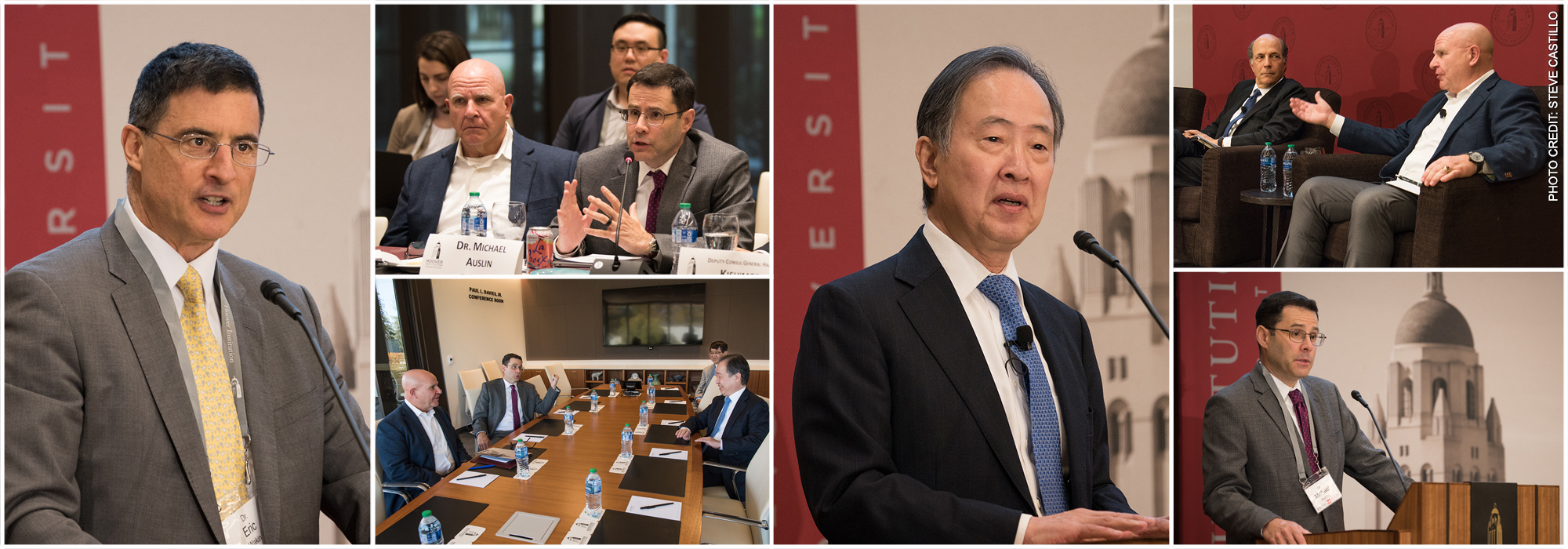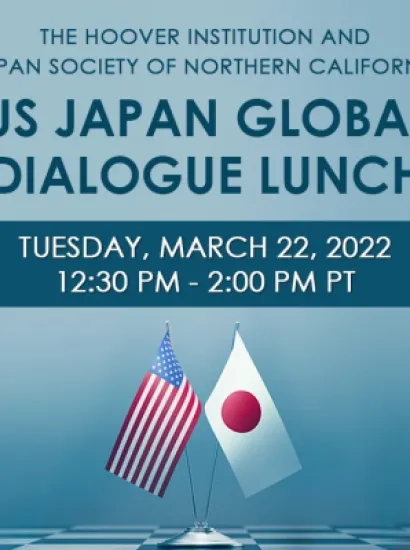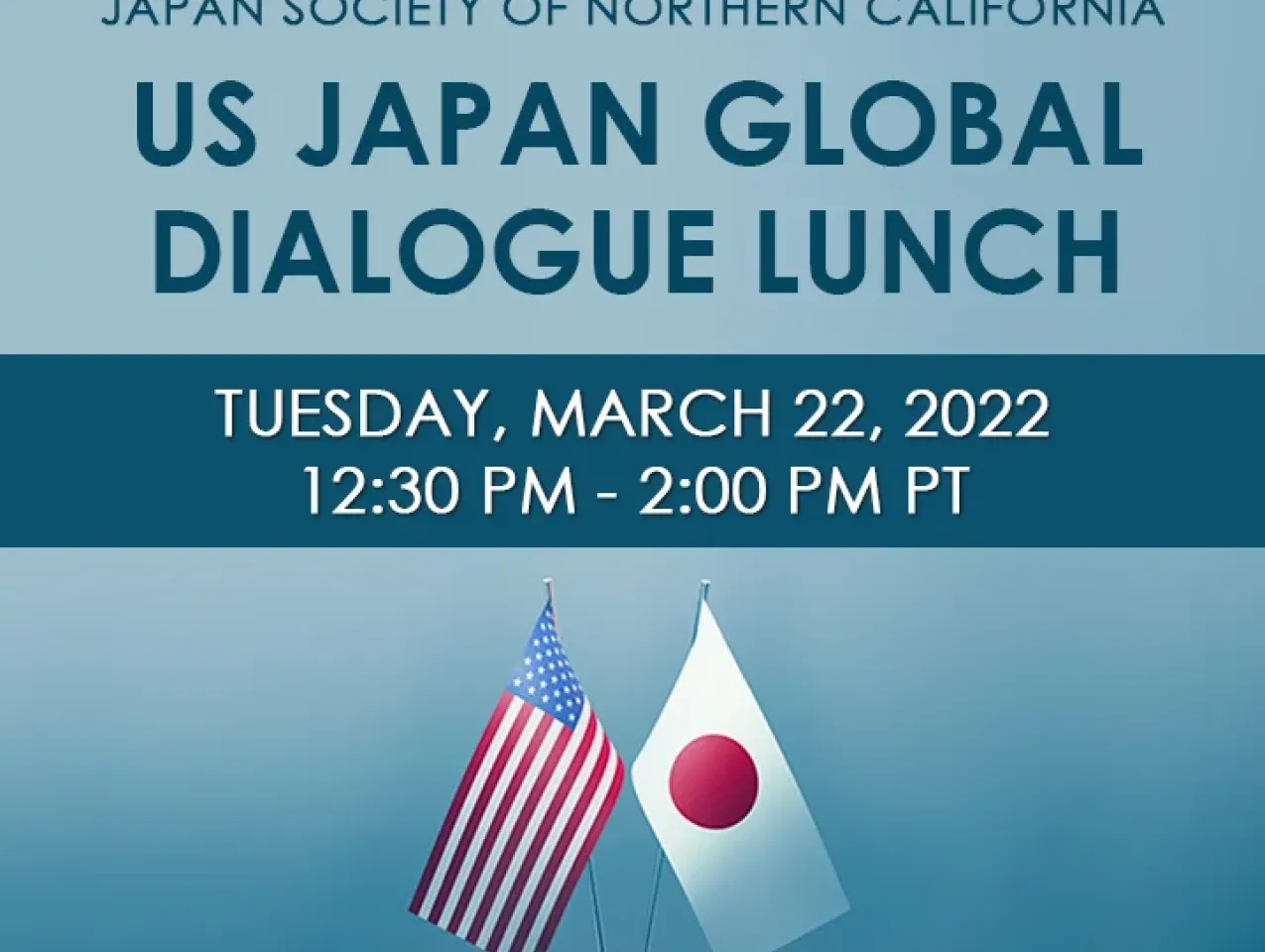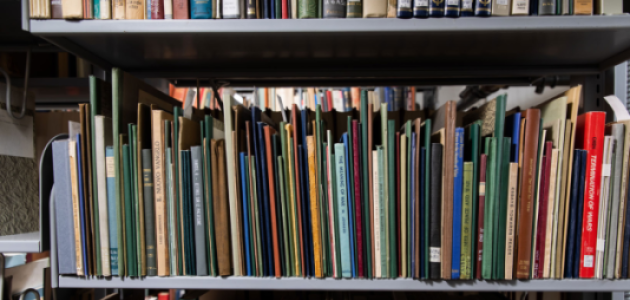
Hoover Institution (Stanford, CA) – The Hoover Institution hosted a new transpacific initiative, the US-Japan Global Dialogue, on the campus of Stanford University. Hoover fellows welcomed scholars, senior policymakers, national security professionals, and business leaders from the United States and Japan for a wide-ranging dialogue about how both countries can enhance bilateral cooperation in the Indo-Pacific and globally. They discussed a host of issues including economic and security cooperation, the development and application of new technologies, and protecting and promoting democratic governance in the region.
Eminent American and Japanese scholars presented papers on each of these topics. Conference attendees were also invited to view Histories Connect: Special Exhibitions of Japanese and Japanese American Collections, created by Kaoru (Kay) Ueda, curator of Hoover’s Japanese Diaspora Collection.
All sessions were closed for public viewing, save for a live streamed opening discussion featuring Koji Tomita, Japan’s ambassador to the United States; H. R. McMaster, former US national security advisor and Hoover’s Fouad and Michelle Ajami Senior Fellow; and two former US ambassadors to Japan, John Roos (2009–13), and Bill Hagerty (2017–19), who is now serving as the junior US senator from Tennessee. The program was moderated by Michael Auslin, Payson J. Treat Distinguished Research Fellow in Contemporary Asia at the Hoover Institution. “This is the first time I can remember when so many ambassadors between our two countries have gathered for a discussion of the alliance’s achievements and where it should go in the future,” noted Auslin.
Ambassador Tomita began the discussion by describing how the United States and Japan can best coordinate in countering aggression from authoritarian forces, principally China and North Korea. He outlined a three-pronged strategy, which included upgrading deterrence capabilities; reducing economic dependence on China and building up the resilience of critical supply chains, especially those related to the manufacturing of semiconductors; and mounting a united diplomatic front through the Quad (the United States, Japan, Australia, and India) and with other Indo-Pacific countries aimed at promoting investment and trade and upholding a rules-based order in the region.
Ambassador Roos remembered being called to Tokyo at one of the most challenging moments of the modern US-Japan diplomatic relationship. Just weeks after his arrival, the Democratic Party of Japan (DPJ) ended the nearly fifty-five-year reign of the Liberal Democratic Party (LDP) over Japan’s politics.
Washington had a long-standing relationship with the leadership of the LDP, which had ruled Japan since 1955. However, the DPJ leader and newly elected prime minister Yukio Hatoyama was more ambivalent about the US-Japan alliance and had another agenda in mind for advancing his country’s security and diplomacy. Hatoyama, for example, wanted to take a more balanced approach in its dealings with China and Russia and pledged to remove America’s military presence on the island of Okinawa.
“Early on, my ambassadorship was really consumed with reestablishing the importance of the alliance . . . but I quickly had to internalize the concept that the alliance cannot be taken for granted,” said Roos. “It’s more than a paper, it’s a deep relationship that needs to be nurtured.”
Roos explained that his ambassadorship was also defined by the aftermath of the March 11, 2011, tsunami that resulted in serious damage to the Fukushima Daiichi nuclear plant. In what is considered the world’s second largest nuclear disaster—after Chernobyl in 1986—the American military and civil humanitarian response that followed helped reinforce the bonds of the alliance.
Roos recalled that the most important decision he made was to become the first American representative to attend a memorial ceremony of the August 1945 bombing of Hiroshima, which he did on its sixty-fifth anniversary. Roos said that the audience responded with great applause when he acknowledged and approached a group of atomic bomb survivors. Roos’s attendance paved the way for President Obama’s visit to Hiroshima in May 2016, and galvanized concrete bilateral cooperation on issues concerning the welfare of humanity, including nuclear nonproliferation, the mitigation of climate change, and public health responses to infectious diseases.
Senator Hagerty stressed that the US-Japan bond is the cornerstone of peace and prosperity in the Indo-Pacific. He explained that the value of the relationship was especially tested when, as a newly appointed ambassador, he was thrust into America’s confrontation with North Korea, after its leader Kim Jong-un, in an act of provocation, ordered his military to conduct a series of intercontinental ballistic nuclear missile tests.
“What that did was focus our very immediate attention on the alliance and building a very strong posture vis-à-vis North Korea,” Hagerty said. “We could not have done this—the United States, Japan, and South Korea—without working together.”
Hagerty said that US-Japan economic ties deepened throughout the Trump presidency and the two countries can do even more today to enhance cooperation. Hagerty advocated partnerships aimed at fostering innovation in artificial intelligence, 5G, and semiconductor technologies, as well as boosting energy security. He also proposed supporting alternatives to China’s One Belt, One Road Initiative, which would enable developing nations to build up their infrastructures and avoid falling into debt traps set by Beijing.
McMaster explained that it was Japan’s prime minister Shinzo Abe who conceptualized the vision of a free and open Indo-Pacific region during a 2007 address to the parliament of India, and which he revived during his second premiership, from 2012 through 2020.
This vision was in direct contrast with that of the Chinese Communist Party, which believes that the size and wealth of their country justifies its dominance over East Asia, McMaster asserted.
McMaster recommended that the United States, Japan, and other democratic nations continue to clarify and promote their values but do so in a practical manner. He argued that the best way to persuade countries from being enveloped into Beijing’s sphere of influence is to not have them choose between two great-power competitors, the United States and China, but to make the case that the best path to a peaceful and prosperous future is opting for sovereignty over servitude. He concluded that the United States should not frame the competition as a zero-sum game.
“We don’t face a dilemma, we don’t face a ‘Thucydides trap,’” McMaster said. “What we have is plenty of competitive space that we can operate in together and with like-minded partners internationally.”






















